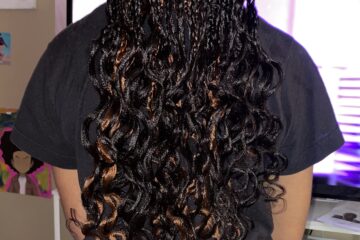As the end of 2020’s fall semester rapidly draws closer, students will be engaging in Winthrop University’s second finals week to be held remotely, and anticipate the likelihood of a similar experience next semester. While it has been a difficult fall
for most, those who have been forced to isolate themselves at home have faced an additional set of challenges. Junior theatre majors Ally Baumgartner and Emilee Kellett both said that while learning from home in online classes, rival technology is far more distracting than in a traditional class setting.
“It’s so much easier to look down at your phone when you’re sitting in a Zoom call rather than if you were sitting in the classroom,” Kellett said.
In addition to sharing a similar story, Baumgartner noted that “having more screen time has fueled a technology addiction” that has proved difficult to break.
The plan to return online after Thanksgiving was reiterated to students in Winthrop Interim President George Hynd’s letter ‘Important COVID-related updates’ sent out on Oct. 13. While the remote plan is being implemented to minimize exposure risk, many have mixed feelings about the modified exams.
Some, such as senior theatre education major Shane O’Reilly, are unfazed by the change.
“I feel fine about finals online,” O’Reilly said. “After doing them online last semester, I kind of have a gauge of what to expect.”
Winthrop faculty are also using last semester’s experience to guide finals, with many switching from multiple choice or written exams during their testing period and instead assigning papers or projects.
Not all students have been able to adapt to remote exams so easily.
“I’m not very confident with online exams,” said Gray Balentine, a sophomore French major, adding that “a traditional setting helps me focus more” when it comes to testing with an attention deficit disorder.
Winthrop students were informed over the summer in a message from Provost and Executive Vice President Adrienne McCormick that the faculty and staff had been preparing with classes, webinars and workshops to improve their online teaching skills. However, McCormick did not specify how much, if any, instruction was included on accommodating student disabilities.
The Health and Counseling Services and Office of Accessibility website has resources listed for COVID-19 support and quarantine policy. However, it does not have any information on maintaining accessibility in an online setting. Therefore it is likely professors may have been left to decide allowances for inclusiveness in their courses on their own this semester.
Looking towards the spring semester, many classes will be taught in a hybrid mode instead of fully online — however, students are faced with similar fears and difficulties.
Hynd’s Oct. 13 message listed a return to in-person classes being the plan for spring. Thus far, his Nov. 6 letter, which notified students that a recent negative COVID-19 test will be required to resume in-person classes, has been the only amendment to that plan.
However, in a trend recurring through this year, Hynd cautioned that, in addition to the possibility of emergency changes, the University will not give a concrete answer until some time in December. Social distancing has taken a toll on many areas of study, including the theatre and dance department. Even with the adoption of virtual shows, the inability to put multiple performers on stage at once adds an extra layer of difficulty.
Moving forward into spring, Baumgartner hopes to be able to perform more, even if it is to a virtual audience. The rest of the department seems to share the sentiment, as the vast majority of both theatre and dance classes for the spring will be either hybrid or entirely in-person.
On the other side, some areas have fared better. Junior sculpture major Lauren Baechel said that even with distancing this semester, “most of my classes were small enough that we could have the same amount of studio time as we normally would.”
Many art studio classes usually cap at five to 10 students, and therefore they have been able to continue relatively unhindered; nearly the entire Fine Arts course offering list for this spring is fully hybrid.
Moving forward into the spring semester, students will need to balance safety with continuing their studies. Vigilance is key— being aware of updates from professors or the university is the best way to get a positive start to the spring semester.
Photo by Gwen Manten




